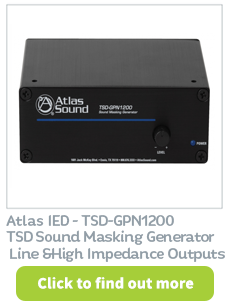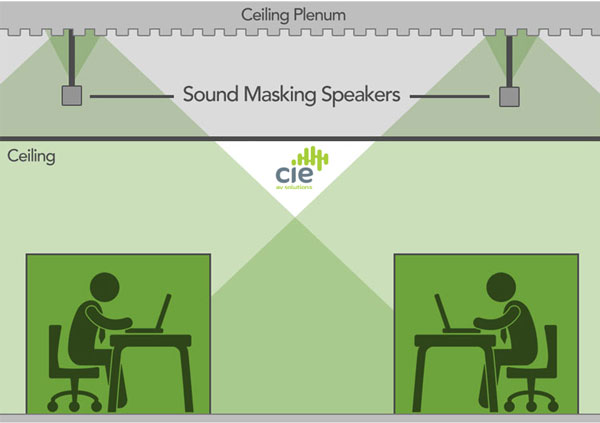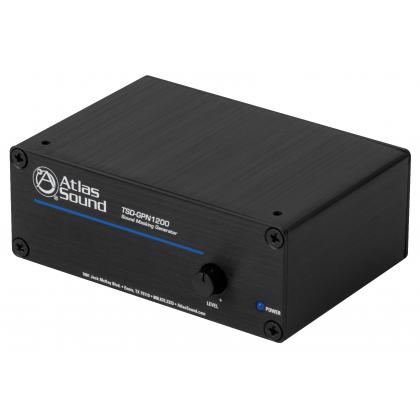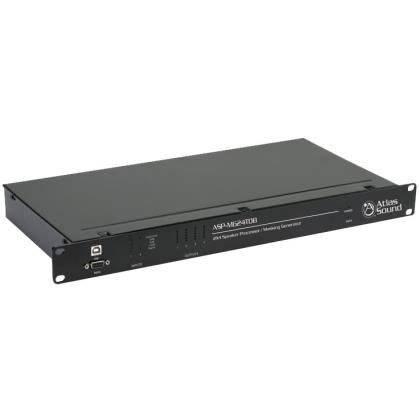How Sound Masking Works
HowToAV talks to Sound Masking expert John Caton of Cambridge Audio Management to find out more about how Sound Masking can provide an effective solution for improved working environments and privacy in the workplace.
 What is Sound Masking?
What is Sound Masking?
Sound Masking is a very low level of sound that is introduced into the room that's tuned to the human speech band.
Why is Sound Masking used?
It is used for privacy in certain environments or to avoid distractions for example in large office environments. It can also be used to improve room acoustics.
Where is Sound Masking used?
Sound masking is often used in open offices where there is generally lots of noise going on, therefore the main reason for sound masking in offices is to avoid distraction from the noise level. As well as the typical overcrowded office situation, another common use of Sound Masking is in high street banking, pharmacies and meetings rooms. In these places conversations between the client and staff need to be kept private from anyone else around, ensuring complete discretion at all times.

How does Sound Masking work?
Sound Masking works by creating ambient sound to cover distractions.
The technology used in a Sound Masking system usually consists of a dedicated Sound Masking Generator which is a device that you install in the area you want to mask. It will then generate white or pink noise, and allow you to control the equalisation of the device to mask the sound to the right level for your environment, ensuring the sound cover is not too much or too little.
A Sound Masking Generator is usually connected to a conventional public address amplifier system and will be distributed through ceiling speakers placed around the room to ensure the sound masking is evenly dispersed throughout the controlled environment.
What's the difference between white noise and pink noise?
Both white noise and pink noise cover all the frequencies that the human ear can hear, however the intensity of pink noise decreases as the frequency increases. White noise can sound like static or a hiss, pink noise on the other hand is smoother and more soothing across all frequencies.
If there is already a PA system or Background Music system installed, can this be used for Sound Masking?
No because of uniformity. Most PA systems or background music systems don't have as much uniformity as you need for a sound masking system. Conventional loudspeaker systems for example have combfiltering whereby you notice a gap as you walk through. With sound masking you don't have combfiltering it is a direct field, you tend to use more than one channel. The whole point of sound making is that you don't want anything that can make it obvious sound masking is there, it just wants to be part of the building noise.
What type of loudspeakers do I use and where do I place them within a room for Sound Masking?
The type of loudspeakers to use ultimately depends on if you are on a direct field system whereby you are using a type of speaker that goes into the ceiling. Then they need to be on the correct centers according to the dispersion and the room height. If you are on a plenum system, (where the speakers are above the ceiling) ceiling has perforated metal tiles for example you need to bring it in closer. If you have an open ceiling you need to consider where the speakers go.
Do I need to consider a programming of timing for a Sound Masking system?
As the number of people in a room varies in a day so does the noise level. Most sound masking systems you can schedule when they come on and off. There are also some that go up and down adaptively however, this is very difficult to manage. For example it may be louder in one area so the level is brought up but in another area it is quiet and the rasing then becomes noticed. Sound masking is meant to be none existent/noticable.
What are they key considerations to look at with a Sound Masking system?
- Ceiling Type - Look at the type of ceiling - is it open or closed? This will dictate whether it is a direct or indirect field.
- Ceiling Height - Very low or high ceiling? These have their own problems.
- Materials in ceiling - Is it perforated metal that performs like an open ceiling? Or is it mineral plasterboard - which is very difficult to penetrate?
- The environment / areas - Where does the customer want the system?
- Tuned - Is it tuned? This is very important.
Is Sound Scaping/Music Masking the same thing?
The frequencies are different, the gaps in music and frequencies change. It is recommended that you have the combination of the 2 so you have the masking but you can also put the mood music on top.
Want help with your next Sound Masking system?
 CIE is one of the UK's leading and most innovative professional AV distributors and is a leading provider of AV professional systems and devices.
CIE is one of the UK's leading and most innovative professional AV distributors and is a leading provider of AV professional systems and devices.
With over 50 years experience in supply and system design for many of the UK's largest, high profile audio projects, our AV experts provide a unique level of technical support and customer service.
If you would like to discuss you next Sound Masking system or would like more information on the latest AV products, please call our team today on T. 0115 9770075 or email us now.
 Got a question for CIE's HowToAV team?..
Got a question for CIE's HowToAV team?..
HowToAV.tv provides a whole host of tips, tricks and technology know-how for the professional audio visual industry.
If you have a question for our AV experts, please contact us now.
Subscribe to our YouTube channel now at howtoav.tv for all the latest video casts or send us your questions to [email protected]









